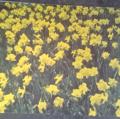A YA epic
3 steloj
Desta and King Solomon's Coin of Magic and Fortune is certainly an epic of a novel, especially considering the youth of its intended audience and that it is the first of a four book series. I am considerably older than its 8-12 year old target readers, but I think I would have been engrossed in the story at that age. The combination of historical fiction, magical realism, and coming of age narrative kept my interest even now. This first part of Desta's story is set in the 1950s so I had a nice sense of continuity from Maaza Mengista's excellent The Shadow King (as Abraham fought in the 1930s Ethiopian-Italian War).
The story focuses on the males in Desta's family so this book would probably be a better choice for boys to read. The women's primary function is to silently provide endless injera flatbreads with pea sauce and I was …
Desta and King Solomon's Coin of Magic and Fortune is certainly an epic of a novel, especially considering the youth of its intended audience and that it is the first of a four book series. I am considerably older than its 8-12 year old target readers, but I think I would have been engrossed in the story at that age. The combination of historical fiction, magical realism, and coming of age narrative kept my interest even now. This first part of Desta's story is set in the 1950s so I had a nice sense of continuity from Maaza Mengista's excellent The Shadow King (as Abraham fought in the 1930s Ethiopian-Italian War).
The story focuses on the males in Desta's family so this book would probably be a better choice for boys to read. The women's primary function is to silently provide endless injera flatbreads with pea sauce and I was disturbed to read of the girls' being routinely married off into strangers homes at the age of just eleven. Abraham has never gotten over the loss of his father at a young age and the impact of that misfortune reverberates through the generations as he struggles to fulfil the father role for his own children. As the youngest, daydreamer Desta experiences the full effects of dysfunctional family, but without understanding the cause. I liked how Ambau portrayed the relationships between the young brothers and with their emotionally absent father. Desta himself is an interesting creation. His immaturity allows the magical realism scenes to flow plausibly because I could easily believe in his visions. His occasional morphing into an apparently much older boy did jar though - would a seven year old boy even notice an eleven year old girl's breasts, let alone describe them as 'succulent pears'?
Desta and King Solomon's Coin of Magic and Fortune does have problems with its pacing which is unfortunate. The later stages include a long history of the eponymous coin which quickly got too dry and Desta's frequent reminiscing over all his woes could be curtailed, but otherwise I did enjoy reading this book. I felt I got a good sense of how daily life unfolds for this rural valley community and it was interesting to read about their co-existing traditional and Christian beliefs, especially in instances where the two clash. I'm not sure I would go on to complete the whole series, but I appreciate this opportunity to read its beginning.

